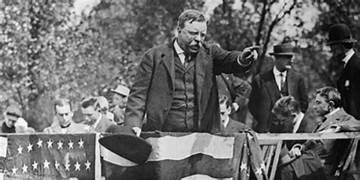Privacy Policy | Terms of Use | Cookie Policy | Disclaimer
Empowering the American middle class — one story at a time.
The Progressive Era: Reform, Responsibility, and Renewal
The Progressive Era, lasting from the 1890s through the 1920s, was one of the most transformative periods in American history. As the country experienced rapid industrial growth, urban expansion, and a surge in immigration, it also faced deepening economic inequality, political corruption, and widespread social unrest. In response, reform-minded individuals from all walks of life united to improve the nation through activism, legislation, and public awareness.
At the heart of the Progressive movement was a belief that government should be more responsive to the needs of its citizens. Reformers called for an end to political machines, patronage, and corporate domination of the political process. They sought to empower voters through initiatives like the direct election of senators (17th Amendment), secret ballots, and referendum votes. These changes aimed to give ordinary Americans a stronger voice in their democracy.
President Theodore Roosevelt, one of the most influential progressives, used the power of the presidency to challenge powerful monopolies, protect natural resources, and promote fairness in commerce. His “Square Deal” aimed to provide equal opportunity for all Americans—business owners, workers, and consumers alike. Roosevelt was succeeded by William Howard Taft and then Woodrow Wilson, both of whom continued progressive reforms in areas like antitrust legislation, banking reform, and labor protections.
One of the defining features of the era was investigative journalism, known as muckraking. Journalists such as Lincoln Steffens exposed corruption in city governments, Ida Tarbell revealed unethical practices by Standard Oil, and Jacob Riis highlighted the squalor of urban tenements in his groundbreaking work, How the Other Half Lives. Their work stirred public outrage and spurred calls for government action.
The Progressive Era also witnessed a significant push for labor reform. Child labor was targeted as a national disgrace, and efforts were made to limit working hours, ensure workplace safety, and recognize the rights of labor unions. Tragic events like the Triangle Shirtwaist Factory fire in 1911 highlighted the urgent need for stronger regulations to protect workers’ lives and rights.
Education became a key focus as well. Reformers like John Dewey emphasized the importance of practical, student-centered learning. Public schools expanded, and more children, especially from immigrant families, had access to education that prepared them for civic life and employment.
The role of women dramatically evolved during this time. Progressive women advocated for temperance, sanitation, public health, and above all, the right to vote. Their efforts culminated in the passage of the 19th Amendment in 1920. Leaders like Jane Addams, who founded Hull House in Chicago, worked to provide social services to the poor and fight for policies that uplifted working-class communities.
Progressives also tackled public health. Cities saw improvements in clean water, sewage systems, and food safety. The creation of government agencies like the Food and Drug Administration (FDA) brought federal oversight to industries that had previously operated with little regulation.
Despite these achievements, the Progressive Era had its limitations. Many reforms did not extend to African Americans, Native Americans, and other minority groups, who continued to face discrimination and exclusion. However, movements during this time laid important groundwork for future civil rights struggles.
The Progressive Era left a lasting legacy. It redefined the role of government in American life, promoting the idea that public institutions could be harnessed to protect citizens, ensure fairness, and advance the public good. The spirit of reform from this era continues to influence how Americans address the challenges of inequality, corporate power, and democracy in the modern era.

